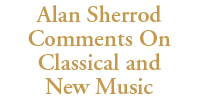Even I could scarcely believe my ears.
Much has been written and said, by me and others, about the clarity and acoustic detail possible in downtown’s Bijou Theatre. But those in the audience for last Sunday’s Knoxville Symphony Chamber Orchestra concert of Serenades for Strings certainly needed no reminder.
KSO Resident Conductor James Fellenbaum, impressively conducting from memory without scores, made his debut as conductor of a KSO subscription series concert. He drew from the orchestra on all three works on the program a deeply satisfying performance, with passionate extremes of Romantic era dynamics, organic tempos, and bold assertiveness. From the tiniest sound of bow barely touching string to a lushness that reverberated through the hall, the orchestra brought an amazing degree of instrumental detail to every single seat. However, that same clarity and detail can have a downside—but more on that a bit later.
The selection of works—Edward Elgar’s Serenade for Strings in E Minor, op. 20; Josef Suk’s Serenade in E-flat Major for Strings, op. 6; and Tchaikovsky’s Serenade in C Major for String Orchestra, op. 48—covered a varied pastoral landscape that revealed how a composer’s geographical environment can become a part of their individual distinctive style. While a freshness and sparkle coursed through them all, each one seemed to describe its own particular national landscape—English, Czech, and Russian—in their own particular terms.
The concert opened with Edward Elgar’s Serenade for Strings in E-minor, op. 20. While the opening Allegro piacevole hurried along its way as if on a familiar woodland path, it was the middle Larghetto that seemed to be the forest clearing where a solitary figure pauses in reflection until fading into a resigned melancholy—before turning back down the path in the Allegretto.
The orchestra ventured a little deeper into the sun-dappled woods with the Suk, a more complex piece than the Elgar, but entirely friendly and conversational. The waltz-like second movement is a flirtatious courtship between string sections. That romance turns serious in the Adagio third movement, where heartfelt and amorous glances are exchanged. The orchestra really breathed life into the changing tempos of the finale movement.
The Tchaikovsky is certainly in a different league than the Elgar and Suk in all the ways that Serenades are intended to communicate. Both in harmonic density and melodic invention, the images it projects are richer, deeper, yet more abstract, and, in many ways, more enduring. The third movement, the Élégie, with its little fugue-like moments between the orchestra’s sections, was a beautiful example of ensemble playing that was truly inspired.
Yes…the Bijou’s acoustics that can delight listeners with clarity and detail, can also easily reveal the tiniest and subtlest of performance bobbles. And in a chamber-size ensemble of twenty or so players, there is simply no place to hide intonation issues, even occasional ones from otherwise excellent players. If expectations weren’t so high for this excellent ensemble and their passionate performance, it really wouldn’t have mattered.

